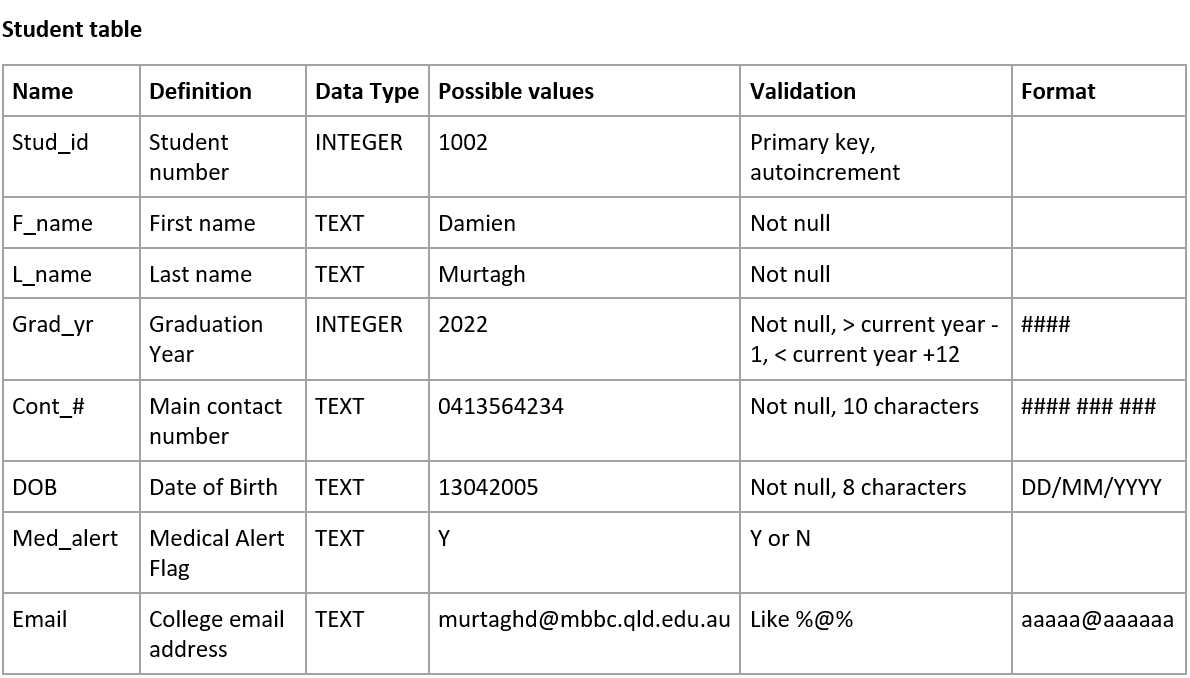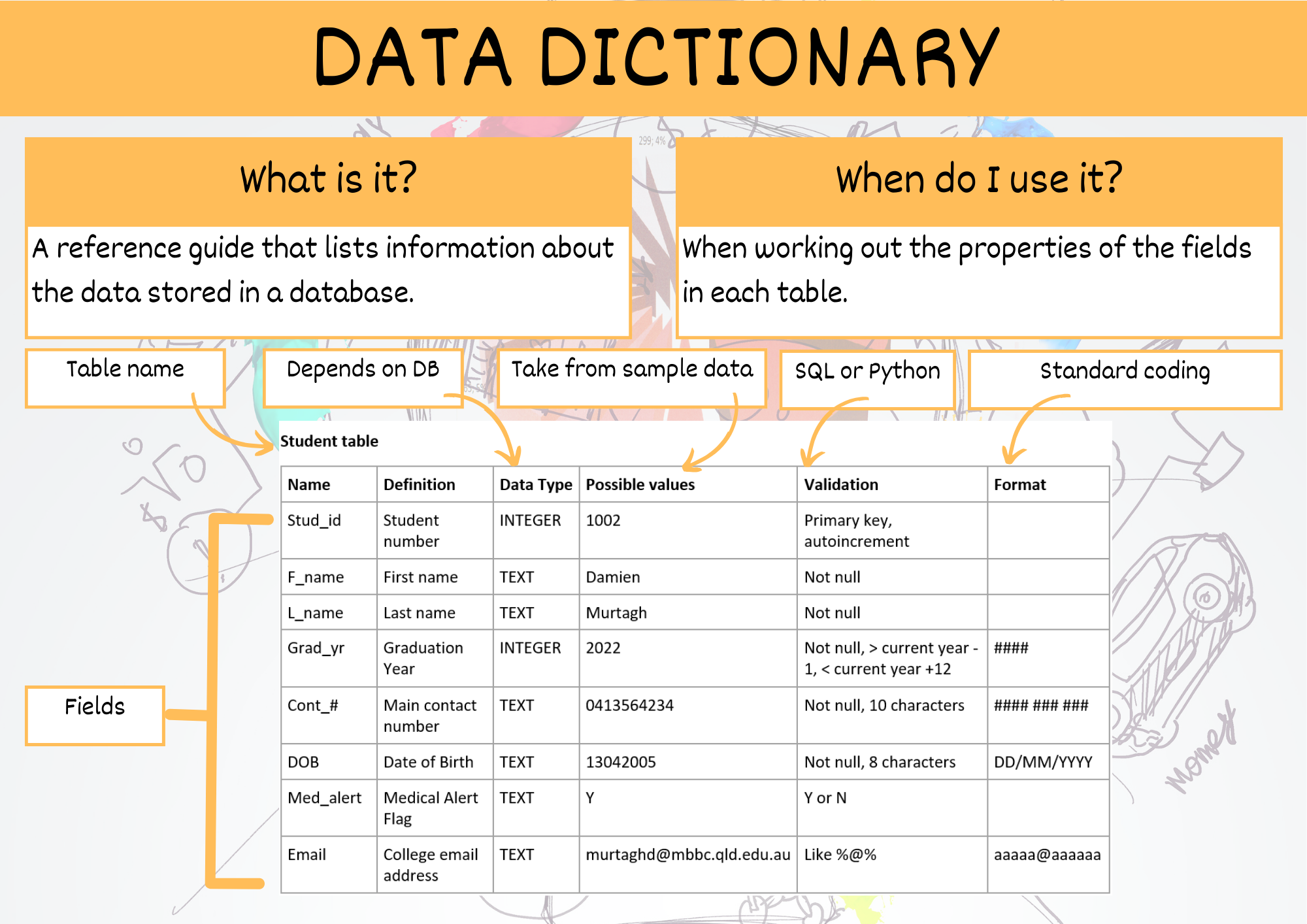Data Dictionary#
A data dictionary is a reference guide that lists information about the data in a database or system, such as its name, type, and rules for use. It helps ensure accurate and consistent use of the data.
The following video explains data dictionaries
Your data dictionaries should include the following details:
Name of Field: make sure you follow you naming conventions
Definition of the Field: these details should naturally flow from the ERD
Data type: in SQLite we have Text, Integer, Real, and Blob
Possible values: taken from sample data
Validation rules: ensures only correct values can be entered
SQLite has built in validation rules:
NOT NULL - Ensures that a column cannot have NULL value
DEFAULT Constraint − Provides a default value for a column when none is specified
UNIQUE Constraint − Ensures that all values in a column are different
PRIMARY KEY Constraint − Uniquely identifies each row/record in a database table
CHECK Constraint − Ensures that all values in a column satisfies certain conditions.
Data can also be validated in Python before Inserting it into the database.
Formatting: data can either be stored formatted or can be formatted once retrieved.
Below is an example of a data dictionary. Note that you should create a data dictionary for each table is your database.

Summary#

